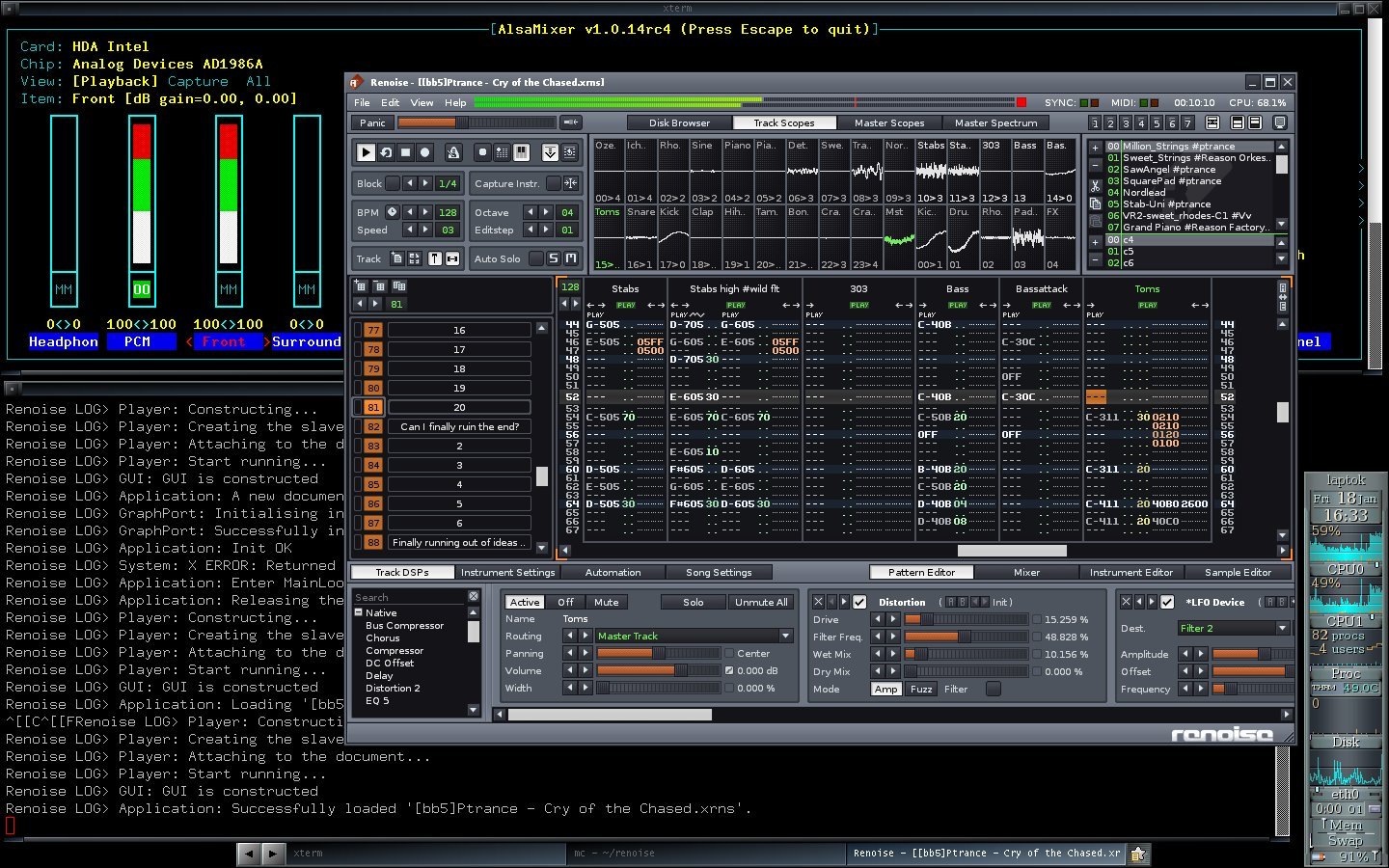

The number of built-in effects in Renoise has grown over the years – everything from workhorse effects such as chorus, delays, EQ, etc., to the more specialized “meta devices”, which enable parameter routing between devices, and across tracks. Together, such a collection of fundamental aspects is called a “Modulation Set”, it forms the basic character of a sound and can be loaded and saved as a preset. each voice is processed independently), and can be defined for each of the fundamental instrument aspects: Volume, Pitch, Panning and Cutoff/Resonance. For example, the screenshot above displays the volume being controlled by the combination of two LFO devices with a gradual fade-out Modulation chains are processed polyphonically (i.e. In the modulation screen, you will always see a real-time preview of the resulting modulation envelope. In fact, there’s a whole section dedicated to working with just modulation envelopes, using an approach similar to how DSP effects are processed: combining basic building blocks together to form more complex envelopes…LFO, ADHSR, Key/Velocity tracker, Fader etc. And each sample can be freely assigned to any (one) modulation set or effect chain, as shown in this illustration:Īs mentioned, you now have the potential to add envelopes on a per-sample basis. It is now possible to define unlimited envelopes (modulations) and create internal effect chains within instruments. This feature-set should make it interesting to sampling-library aficionados and synthesizer freaks alike. With Renoise 3.0, a lot of what makes Renoise special in the first place – the tracker interface, the flexible effects and routing – has now been integrated into its built-in sampler. It lets you record, compose, edit, process and render production-quality audio using a tracker-based approach. Renoise is a Digital Audio Workstation (DAW) with a refreshing twist.


 0 kommentar(er)
0 kommentar(er)
